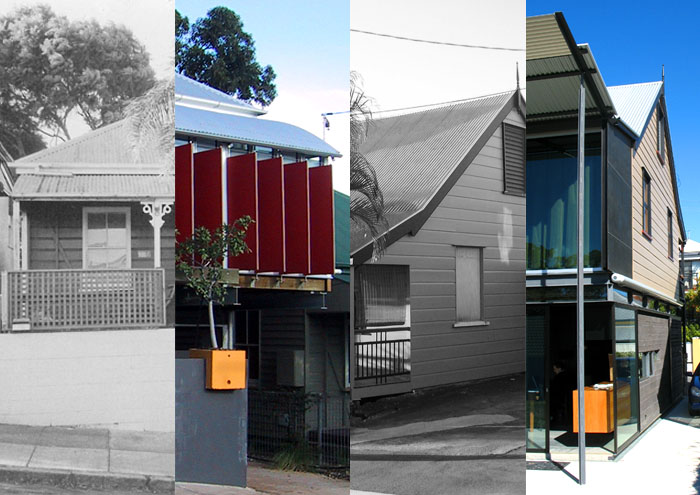Timber and Tin Revisited:
Modifications to the Queensland House Using Burra Charter Principles [Architecture Thesis, UQ]
Abstract
When modifying and adding to the pre-World War II ‘timber and tin’ Queensland house, the prevalent approach of ‘matching existing’ forms and materials, is stifling the opportunity to define a contemporary ‘Queensland style’ and weakening the legibility of Brisbane’s original pre-war streetscapes. This paper aimed to show that, for the purpose of maintaining the cultural significance of the pre-war Brisbane streetscape, the application of an alternative approach to modifications – one which closely aligns with the principles of the Burra Charter – is a more appropriate response when modifying the existing Queenslander.
In order to prove this, the research investigated Queensland’s architectural history, through existing texts, in order to discuss the possibility of an emerging Queensland vernacular. This historical investigation took into account the tradition of past modifications to the Queensland house and furthermore, outlined the existing recommendations for approaches to future modifications. In addition, the research investigated Brisbane’s local government legislation, for its realised effects on existing pre-war housing stock.
These investigations found that, although ‘timber and tin’ is the most easily identifiable Queensland vernacular characteristic, there are other traditions, as well as contemporary examples of architectures, that can contribute to the discourse on defining a regionalist architecture for Queensland. Regarding this paper’s research on modifications to the Queenslander, it was established that changes to the Queensland house were, and are, a widespread phenomenon, inherent to Brisbane’s housing tradition. This characteristic of ‘change’ was offered as an enduring vernacular characteristic that could be celebrated as a defining attribute of contemporary Queensland style. It was found that the local government legislation is resistant to this change, and condones a ‘match existing’ approach to modifications to the Queensland house.
As a method of testing this paper’s contention, (that the application of the principles of the Burra Charter is an appropriate way to maintain the cultural significance of the Brisbane streetscape) three case studies were chosen for investigation and documentation. As part of their selection criteria, these case studies were examples of modifications that had been carried out in a way that demonstrated the principles of the Burra Charter. The case studies showed that, the ‘contrast’ approach to modifications, which is the widely accepted method for inserting new work within a heritage listed place, can be successfully applied to the pre-war Queensland house. This approach not only creates an opportunity to contribute to a definition of a contemporary Queensland vernacular, but clearly delineates the original built fabric from the new and, on a larger scale, heightens the legibility of the pre-war dwelling within the ever-changing Brisbane streetscape.
Details
Author: Brant Harris
Date: 2007


Follow Us